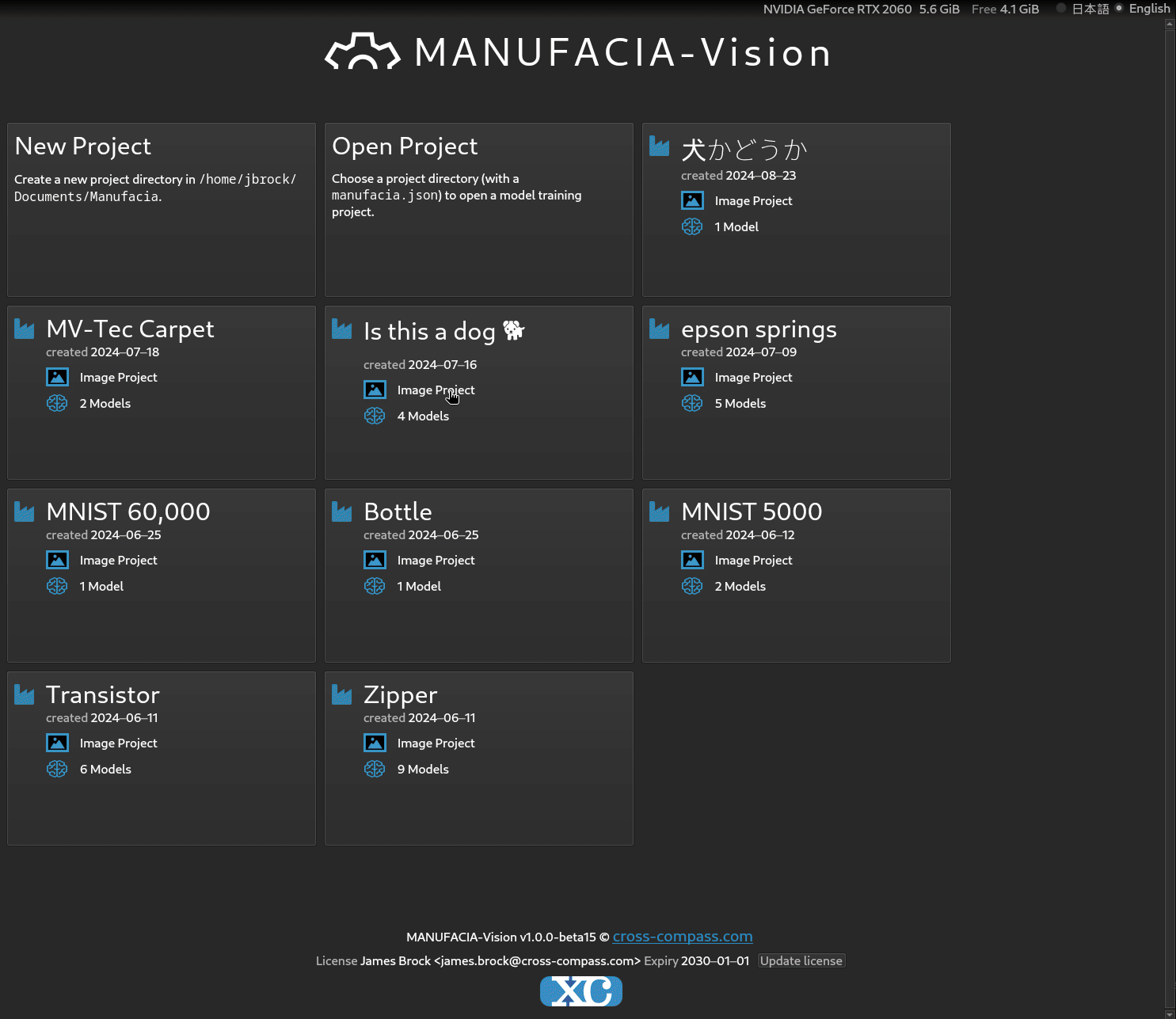Declarative GUI framework for Python and Qt
Project description
Edifice
Declarative GUI framework for Python and Qt
Edifice is a Python library declarative framework for application user interfaces.
- Modern declarative UI paradigm from web development.
- 100% Python application development, no language inter-op.
- A native Qt desktop app instead of a bundled web browser.
- Fast iteration via hot-reloading.
Edifice uses PySide6 or PyQt6 as a backend. Edifice is like React, but with Python instead of JavaScript, and Qt Widgets instead of the HTML DOM.
If you have React experience, you'll find Edifice to be easy to learn. Edifice has function components, props, and Hooks just like React.
Getting Started
- Installation
pip install PySide6pip install pyedifice - Source published at github.com/pyedifice/pyedifice
- Package published at pypi.org/project/pyedifice
- Documentation published at pyedifice.github.io
Why Edifice?
Declarative
The premise of Edifice is that GUI designers should only need to worry about what is rendered on the screen, not how the content is rendered.
Most existing GUI libraries in Python, such as Tkinter and Qt, operate imperatively. To create a dynamic application using these libraries, you must not only think about what to display to the user given state changes, but also how to issue the commands to achieve the desired display.
Edifice allows you to declare what should be rendered given the current state, leaving the how to the library.
User interactions update the state, and state changes update the GUI. You only need to specify what is to be displayed given the current state and how user interactions modify this state.
With Edifice you write code like:
number, set_number = use_state(0)
with VBoxView():
Button("Add 5", on_click=lambda event: set_number(number+5))
Label(str(number))
and get the expected result: the GUI always displays
a button and a label displaying the current value of number.
Clicking the button adds 5 to the number,
and Edifice will handle updating the GUI.
Edifice vs. Qt Quick
Qt Quick is Qt’s declarative GUI framework for Qt.
- Edifice programs are written in Python, whereas Qt Quick programs are written in Python + the special QML language + JavaScript.
- Because Edifice interfaces are declared in Python code, binding the code to the declared UI is much more straightforward.
- Edifice makes it easy to create dynamic applications. It's easy to create, shuffle, and destroy widgets because the interface is written in Python code. QML assumes a much more static interface.
By analogy, Qt Quick is like DOM + HTML + JavaScript, whereas Edifice is like React.js. While QML and HTML are both declarative UI languages, they require imperative logic in another language for dynamism. Edifice and React.js allow fully dynamic applications to be specified declaratively in one language.
How it works
An Edifice component is a render function which declares the mapping from the state to UI. The state of a component is divided into props and state. props are passed to the component in the constructor, whereas state is the component’s own internal state.
Changes to props or state will trigger a re-render of the component. The old and new component trees will be compared to one another, and a diffing algorithm will determine which components previously existed and which ones are new (the algorithm behaves similarly to the React diffing algorithm). Components that previously existed will maintain their state, whereas their props will be updated. Finally, Edifice will issue the minimal update commands to update the UI.
Development Tools
Dynamic hot-reload
Dyanamic hot-reload is very useful for fine-tuning the presentation styles of Elements deep within your application. You can test if the margin should be 10px or 15px instantly without closing the app, reopening it, and waiting for everything to load.
Element Inspector
Similar to the Inspect Elements tool of a browser, the Element Inspector will show you the tree of Elements in a running Edifice application, along with all of the props and state of the Elements.
License
Edifice is MIT Licensed.
Edifice uses Qt under the hood, and both PyQt6 and PySide6 are supported. Note that PyQt6 is distributed with the GPL license while PySide6 is distributed under the more flexible LGPL license.
Can I use PySide for commercial applications?
Yes, and you don't need to release your source code to customers. The LGPL only requires you to release any changes you make to PySide itself.
Version History / Change Log / Release Notes
See Release Notes (source: versions.rst)
Contribution
Contributions are welcome; please send Pull Requests! See DEVELOPMENT.md for development notes.
When submitting a Pull Request, think about adding tests to tests and adding a line to the Unreleased section of the change log versions.rst.
Poetry Build System
The Poetry pyproject.toml specifies the package dependecies.
Because Edifice supports PySide6 and PyQt6 at the same time, neither
are required by [tool.poetry.dependencies]. Instead they are both
optional [tool.poetry.group.dev.dependencies]. A project which depends
on Edifice should also depend on either PySide6 or PyQt6.
The requirements.txt is generated by
poetry export -f requirements.txt --output requirements.txt
To use the latest Edifice with a Poetry pyproject.toml from Github
instead of PyPI, see
Poetry git dependencies,
for example:
[tool.poetry.dependencies]
python = ">=3.10,<3.11"
pyedifice = {git = "https://github.com/pyedifice/pyedifice.git"}
pyside6 = "6.5.1.1"
Project details
Release history Release notifications | RSS feed
Download files
Download the file for your platform. If you're not sure which to choose, learn more about installing packages.
Source Distribution
Built Distribution
Hashes for pyedifice-1.2.0-py3-none-any.whl
| Algorithm | Hash digest | |
|---|---|---|
| SHA256 | b90041d1020da19f234a4c45ac0c57ac5df1cd90cdc9c1a8fbaa7d566d1ee2b8 |
|
| MD5 | 5ce1c0261cc911654bb27d241818dd6d |
|
| BLAKE2b-256 | 0b9b09491c41cfaf438a7431851f14ec955382d9e220b7e883e72b1831ed918d |














